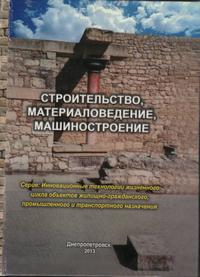Influence of outdoor particulate pollution and meteorological parameters on indoor fine particles levels in two different ventilation systems
Keywords:
Correlation between indoor particulate pollution and outdoor PM concentration and meteorological parametersAbstract
The health risks of fine particulate matter PM air pollution were been investigated in many scientific studies. Some of the effects are an aggravated asthma, increase in respiratory symptoms like coughing and difficult or painful breathing, chronic bronchitis, decreased lung function, and premature death. Outdoors particulate pollution is one of principal sources of indoor fine particles. This paper is an experimental study for evaluating the impact of outdoor PM, temperature and pressure difference, inside and outdoor relative humidity and wind speed on the indoor level of particles concentrations in two different ventilation systems: humidity-controlled extract-only ventilation (HC-EOV) and multi supply-only ventilation (M-SOV). The results show that the relationships vary predominantly with particles size range and the air exchange rate. The influence seems to be lower with the M-SOV system due to the air filtration, the pressurization effect and the high air exchange rate.References
CETIAT. 2009. “Mesure de L’efficacité Initiale D’un Filtre à Air”. 2914229. CETIAT.
Pope, C. Arden, and Douglas W. Dockery. 2006. “Health Effects of Fine Particulate Air Pollution: Lines That Connect.” Air & Waste Manage 56 (June): 709–742.
Tippayawong, Nakorn, Patcharawadee Khuntong, Chanawat Nitatwichit, Yottana Khunatorn, and Chutchawan Tantakitti. 2009. “Indoor/outdoor Relationships of Size-resolved Particle Concentrations in Naturally Ventilated School Environments.” Building and Environment 44 (1) (January): 188–197. doi:10.1016/j.buildenv.2008.02.007.
Weschler, Charles J., and Helen C. Shields. 2003. “Experiments Probing the Influence of Air Exchange Rates on Secondary Organic Aerosols Derived from Indoor Chemistry.” Atmospheric Environment 37 (39–40) (December): 5621–5631. doi:10.1016/j.atmosenv.2003.05.007.
“WHO | Tackling the Global Clean Air Challenge.” 2013. WHO. Accessed August 1. http://www.who.int/mediacentre/news/releases/2011/air_pollution_20110926/ en/index.html.
Xiaohong Yao, Ngai Ting Lau, Ming Fang, and Chak K. Chan. 2007. “Correlations of Ambient Temperature and Relative Humidity with Submicron Particle Number Concentration Size Distributions in On-Road Vehicle Plumes.” Aerosol Science and Technology 41: 692–700. doi:0.1080/02786820701408491.
Zhu, Yifang, William C. Hinds, Margaret Krudysz, Thomas Kuhn, John Froines, and Constantinos Sioutas. 2005. “Penetration of Freeway Ultrafine Particles into Indoor Environments.” Journal of Aerosol Science 36 (3) (March): 303–322. doi:10.1016/j.jaerosci.2004.09.007.
Downloads
Published
Issue
Section
License
Редакція Видання категорично засуджує прояви плагіату в статтях та вживає всіх можливих заходів для його недопущення. Плагіат розглядається як форма порушення авторських прав і наукової етики.
При виявлені у статті більш ніж 25% запозиченого тексту без відповідних посилань та використання лапок, стаття кваліфікується як така, що містить плагіат. У цьому випадку стаття більше не розглядається редакцією, а автор отримує перше попередження.
Автори, в статтях яких повторно виявлено плагіат, не зможуть публікуватися в усіх журналах Видавництва ДВНЗ «Придніпровська державна академія будівництва та архітектури».
Автори, які публікуються у цьому журналі, погоджуються з наступними умовами:
- Автори залишають за собою право на авторство своєї роботи та передають журналу право першої публікації цієї роботи на умовах ліцензії Creative Commons Attribution License, котра дозволяє іншим особам вільно розповсюджувати опубліковану роботу з обов'язковим посиланням на авторів оригінальної роботи та першу публікацію роботи у цьому журналі.
- Автори мають право укладати самостійні додаткові угоди щодо неексклюзивного розповсюдження роботи у тому вигляді, в якому вона була опублікована цим журналом (наприклад, розміщувати роботу в електронному сховищі установи або публікувати у складі монографії), за умови збереження посилання на першу публікацію роботи у цьому журналі.
- Політика журналу дозволяє і заохочує розміщення авторами в мережі Інтернет (наприклад, у сховищах установ або на особистих веб-сайтах) рукопису роботи, як до подання цього рукопису до редакції, так і під час його редакційного опрацювання, оскільки це сприяє виникненню продуктивної наукової дискусії та позитивно позначається на оперативності та динаміці цитування опублікованої роботи (див. The Effect of Open Access).

